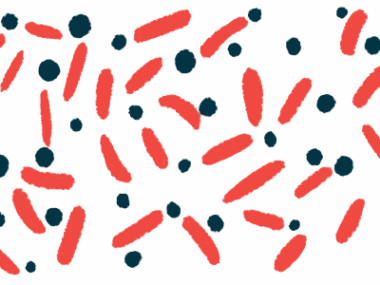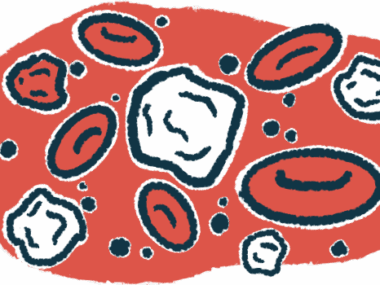CF lung infection lab model offers way to study antimicrobials
Model will also inform how antibiotic-resistant infections arise
Written by |

Researchers have developed a lab model of a cystic fibrosis (CF) lung infection that can help inform how antibiotic-resistant infections arise and to test antimicrobial treatment candidates.
A human phlegm-like substance was generated where multiple types of microbes were able to grow into three-dimensional (3D) biofilms, the protective clusters formed by bacteria and fungi that make them resistant to treatment in CF lungs.
“The capacity to create complex 3D biofilms in the lab in a simple manner will lead to practical tools to better understand how these living structures form and how to treat them better,” Alvaro Mata, PhD, professor at the University of Nottingham, the U.K., and the study’s senior author, said in a press release. The findings were published in “Co-assembling living material as an in vitro lung epithelial infection model,” in Matter.
The accumulation of thick and sticky mucus in the lungs leaves CF patients vulnerable to chronic microbial infections, which often involve bacteria such as Pseudomonas aeruginosa and Staphylococcus aureus, but can also include certain fungi, such as Candida albicans.
Over time, bacteria may develop mechanisms to resist or tolerate standard antibiotic treatments, making the infections harder to treat. Fungi can form a similar resistance to antifungal medications.
Among these resistance mechanisms is the formation of biofilms, or clusters of microbes, that attach to each other and various surfaces. These clusters also contain substances such as DNA, proteins, and fats designed to sustain them and protect them against threats.
Studying CF lung infections in the lab
New approaches are needed to combat biofilm formation and treat medication-resistant infections, but this is difficult to study in the lab. Generating a model that reflects the complexity of the CF lungs where biofilms grow and that enables living, three-dimensional biofilms to form has been difficult.
In this study, scientists engineered a model that mimics biofilm formation in CF phlegm, or sputum, which contains the mucus formed in the lungs. The phlegm-like material was made up of a cell culture fluid known to be prone to infection, along with certain bioactive protein fragments that would enable a 3D matrix to form on which biofilms could grow.
When microbes that infect CF lungs, including P. aeruginosa, S.aureus, and C. albicans, were added, they indeed formed 3D biofilms with physical properties that resembled those seen in CF lungs.
The scientists then used this living material to generate a model of a CF lung infection that could evaluate the effects of antibiotics. They did so by culturing the infected sputum-like material with epithelial cells, a type of cell that lines the airways.
The microbial communities were found to grow on top of the epithelial cells and showed a tolerance to the standard antibiotic ciprofloxacin under certain conditions.
“These results demonstrate that the in vitro-infected lung epithelial model is able to support the growth of polymicrobial communities and … represents a realistic scenario of respiratory tract infection with antibiotic tolerance,” the researchers wrote. In vitro refers to a process that takes place in a lab, not a living organism, whereas in vivo refers to a process in a living organism.
The researchers believe their in vitro model offers a more accurate way of modeling the in vivo microbial-infected CF lung environment, which can be used to test new therapeutic options.
“The technology developed in this study will revolutionize the way we study biofilm-mediated infections and assess the effectiveness of novel antimicrobials using different in vivo-like infection environments,” said study author Miguel Cámara, PhD, a professor at the University of Nottingham.
The researchers acknowledged there were differences in sputum among CF patients that an artificial sputum doesn’t account for. “The next step of our study will focus on developing customized co-assembling living systems that enable the use of real sputum samples,” they said.







